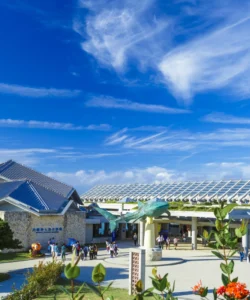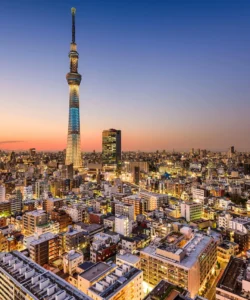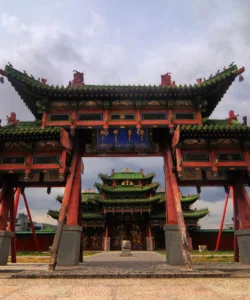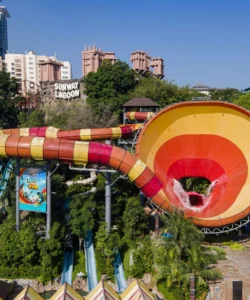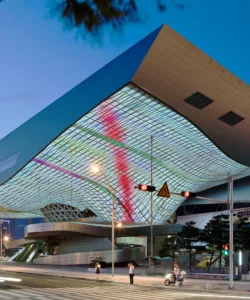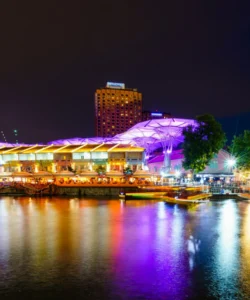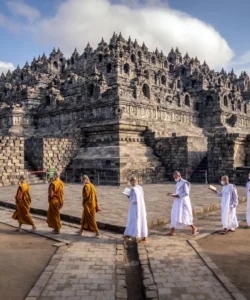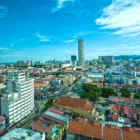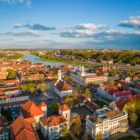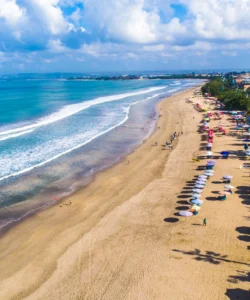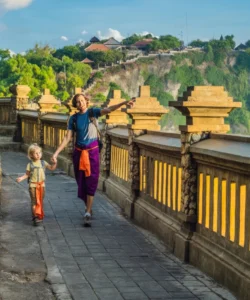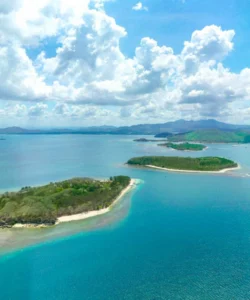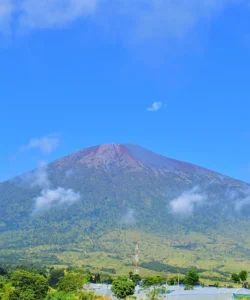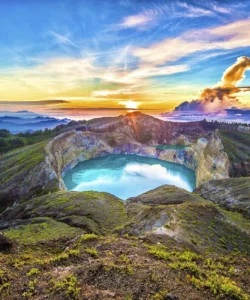Prambanan Temple, often referred to as Rara Jonggrang (Slender Maiden), is a magnificent 9th-century Hindu temple complex located in Central Java, Indonesia. It is the largest Hindu temple complex in Indonesia and one of the largest in Southeast Asia, renowned for its towering and pointed architecture, rich carvings, and the captivating narrative of the Ramayana epic depicted in its reliefs.
Name: Prambanan Temple (Indonesian: Candi Prambanan; Javanese: Candhi Prambanan), also known as Rara Jonggrang
Address: Jl. Raya Solo – Yogyakarta No.16, Kranggan, Bokoharjo, Prambanan, Kabupaten Sleman, Daerah Istimewa Yogyakarta 55571, Indonesia.
It is located approximately 17 kilometers (11 miles) northeast of Yogyakarta city center, along the main road connecting Yogyakarta and Surakarta.
How to Get There:
Most visitors access Prambanan from Yogyakarta.
- By Air: The closest major airport is Yogyakarta International Airport (YIA). From there, you can take a pre-booked taxi, Grab/Gojek (ride-sharing apps), or a local bus.
- From Yogyakarta City to Prambanan:
- Private Car with Driver (Recommended): This offers the most comfort and flexibility, especially if combining with other sites like Borobudur. Many tour operators and hotels in Yogyakarta offer this service. The drive takes about 30-45 minutes.
- TransJogja Bus (Budget-Friendly): Take the TransJogja bus (Route 1A) from Malioboro Street or Tugu Station directly to the Prambanan bus stop, which is just outside the temple complex entrance. The journey takes about 1-1.5 hours, depending on traffic.
- Taxi/Ride-Hailing Apps (Grab/Gojek): Convenient for direct transport, though more expensive than buses.
- Motorbike Rental: For adventurous and experienced riders, renting a motorbike in Yogyakarta is an option.
- Temple Access: Tickets can be purchased at the main entrance. The complex is large, and there’s a small train service inside if you prefer not to walk all the way to the main temple cluster.
Landscape and Architecture:
Prambanan’s architecture is characterized by its towering, slender Hindu temples, designed to symbolize Mount Meru, the sacred mountain of Hindu cosmology.
- High and Pointed Architecture: Unlike the more sprawling, stepped pyramid form of Borobudur, Prambanan’s temples are distinctly high and pointed (shikhara style), reflecting the typical architecture of Hindu temples found in India. This upward-reaching design is meant to direct the worshipper’s gaze skyward towards the heavens and the gods.
- Three Main Temples (Trimurti): The central and most prominent part of the complex consists of three large temples dedicated to the Hindu Trimurti (the three main gods):
- Candi Shiva Mahadeva: The tallest central temple, dedicated to Lord Shiva, standing at an impressive 47 meters (154 feet) high. It houses four chambers, with the main one containing a large statue of Shiva.
- Candi Vishnu: To the north of Shiva’s temple, dedicated to Lord Vishnu.
- Candi Brahma: To the south of Shiva’s temple, dedicated to Lord Brahma.
- Three Vahana Temples: Facing each of the main Trimurti temples are three smaller temples (Vahana temples) dedicated to the respective “vehicles” or mounts of the gods: Nandi (Shiva’s bull), Garuda (Vishnu’s eagle), and Hamsa (Brahma’s swan).
- Bas-Reliefs of Ramayana and Bhagavata Purana: The inner walls of the balustrades on the main Shiva and Brahma temples are intricately carved with magnificent bas-reliefs. The most famous are those depicting the epic story of the Ramayana, starting from the east entrance of Shiva’s temple and reading clockwise. The Vishnu temple depicts stories from the Bhagavata Purana, focusing on Krishna. These reliefs are incredibly detailed and are considered masterpieces of ancient Javanese Hindu art.
- Perwara Temples: Surrounding the central temple courtyard are the ruins of 224 smaller Perwara (guardian) temples, arranged in four concentric rows. While most are in ruins, some have been reconstructed, giving a sense of the complex’s original immense scale.
- Gates and Courtyards: The complex is laid out with multiple courtyards and gates, each marking a transition to a more sacred space, following Hindu temple design principles.
- Volcanic Stone Construction: Like Borobudur, Prambanan was constructed using andesite stone, likely sourced from local volcanic quarries, assembled with precise interlocking joints without mortar.
What Makes It Famous:
- Largest Hindu Temple Complex in Indonesia: Prambanan is the most significant Hindu archaeological site in Indonesia, showcasing the peak of ancient Javanese Hindu art and architecture.
- UNESCO World Heritage Site: Inscribed in 1991, it is recognized for its architectural and artistic significance, being a unique example of Hindu temple architecture and a cultural masterpiece.
- Ramayana Ballet: The temple complex serves as a dramatic backdrop for the spectacular Ramayana Ballet performances, especially during the full moon, where the epic story comes to life through traditional Javanese dance and music. This is a world-renowned cultural event.
- Towering Architecture: Its slender, towering temples are a visually striking contrast to the more massive, stepped structure of Borobudur, representing a different and equally impressive style of ancient temple building.
- Legend of Rara Jonggrang: The temple is steeped in the popular local legend of Rara Jonggrang (the Slender Maiden), who challenged Prince Bandung Bondowoso to build 1,000 temples in one night. This legend adds a romantic and mythical allure to the site.
- Architectural Diversity: Unlike Borobudur’s singular Buddhist narrative, Prambanan is a complex dedicated to multiple Hindu deities, reflecting a different theological and artistic approach.
- Earthquake Damage and Restoration: Prambanan has faced significant damage from earthquakes and volcanic eruptions over centuries (most notably in 2006). Its ongoing restoration efforts are a testament to global commitment to preserving this magnificent heritage.
Differences from Some Other Wonders:
- Hindu vs. Buddhist: The most fundamental difference from Borobudur (which is also in Central Java) is its Hindu religious affiliation and architectural style, in contrast to Borobudur’s Buddhist nature. Prambanan is dedicated to the Trimurti, while Borobudur is a mandala of Buddhist cosmology.
- Verticality and Pointed Towers: Prambanan’s “high and pointed” shikhara (tower) architecture is a direct stylistic contrast to Borobudur’s massive, flat-topped, ascending terraces and domes. Prambanan reaches upwards, symbolizing mountains, while Borobudur is about circumambulating and ascending a spiritual path.
- Central Courtyard Layout: Prambanan is laid out as a complex of individual temples around a central courtyard, with distinct main shrines and numerous smaller perwara temples, whereas Borobudur is a single, unified monumental structure.
- Ramayana Reliefs: While both have extensive reliefs, Prambanan is specifically famous for its detailed Ramayana epic reliefs, which tell a continuous mythological story, a different narrative focus than Borobudur’s more doctrinal Buddhist Jataka tales.
- Live Performance Backdrop: The use of the actual temple complex as a backdrop for the grand Ramayana Ballet performance is a unique cultural offering that sets it apart from other temple sites.
- Legends and Folklore: The strong local legend of Rara Jonggrang is deeply intertwined with Prambanan, giving it a unique mythical dimension.
- “Twin” Relationship with Borobudur: Being in the same region, Prambanan and Borobudur are often visited together, forming a pair of contrasting but equally magnificent ancient religious wonders, one Buddhist and one Hindu, showcasing the rich religious history of Java.
Prambanan Temple Photos:































